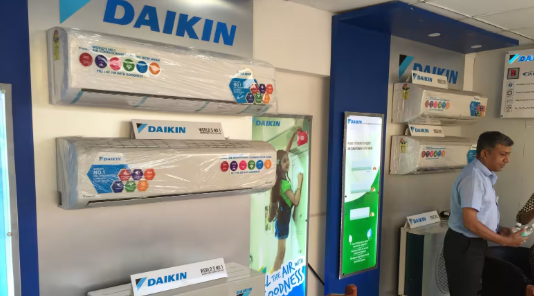
Illustration
According to data from the Japan Refrigeration and Air Conditioning Industry Association, the demand for air conditioners in India in 2024 reached 11.94 million units, surpassing Japan (10.18 million units) for the first time and second only to China. China continues to lead the global market with 47.44 million air conditioners, accounting for about a third of the global demand.
Not long ago, the scale of the air conditioner market in India was still modest. In 2019, the country consumed only about 5.87 million units, equivalent to half of Japan’s consumption. However, after a decline due to the COVID-19 pandemic, demand in India has recovered and grown strongly.
As one of the hottest countries in the world, with temperatures reaching up to 50 degrees Celsius, the need for cooling in India is increasing. While air conditioners were once considered a luxury item, today, more and more people view them as an essential appliance. The Indian government has also encouraged the use of air conditioners as a solution to adapt to climate change.
Economic growth and personal income are important drivers of this demand. According to the World Bank, India’s GDP per capita in 2023 reached $2,480, an increase of 22% compared to 2019. This income level is still much lower than that of developed countries, but it is approaching the $3,000 threshold, which is considered a critical point for boosting consumption of durable goods, including air conditioners.
Nevertheless, the ownership rate of air conditioners in India remains low, at only about 7% (according to data from Daikin Industries). This rate is expected to increase to about 12% in the next few years. Anticipating this trend, Daikin is planning to build its third air conditioner factory in India by 2030, increasing its capacity from 3 million to 5-7 million units per year.
In the fiscal year ended March 31, Daikin’s consolidated revenue increased by 8% to ¥4,750 billion (equivalent to $32.6 billion). In the Indian market, sales in local currency terms grew by 26%, although the company did not disclose the specific figures.
Other businesses are also expanding their presence in this potential market. Mitsubishi Electric (Japan) is currently building a ¥26.7 billion factory in India, with a capacity of 300,000 units per year. Meanwhile, Blue Star, a domestic company, plans to increase its capacity by 30% to 1.8 million units.
A favorable factor for domestic manufacturers is the decline of imports from China. Once accounting for nearly 40% of the market around 2018, Chinese air conditioners now face more barriers due to the Indian government’s “Make in India” policy, which aims to promote localization and reduce dependence on foreign goods.
In Japan, the demand for air conditioners has remained almost unchanged over the past five years. However, climate change is presenting new opportunities, especially in Hokkaido, known for its cool climate. The rising temperatures and high electricity costs are driving people to adopt energy-efficient appliances, creating growth potential for high-efficiency air conditioners.
Why Hung Yen Shattered All Previous Records in Tax Revenue: A Six-Month Haul Twice the Usual and Nearing 2024’s Full-Year Collection
The high tax revenue in Hung Yen province can be attributed to the development of several large-scale urban and real estate projects in the area, which were realized after a period of investment preparation.
The Rising Era: Vietnam’s Stock Market on the Journey to Regional Prominence
The Vietnamese stock market is poised for sustainable growth in the decade ahead, fueled by an upgrade in its market status, influx of foreign capital, and a vibrant domestic investor base. This upgrade is a testament to the market’s resilience and potential, attracting global attention and setting the stage for a new era of prosperity.
Is There Still a Market for Luxury Apartment Rentals in Haiphong?
The future of real estate is bright, and analysis reveals a promising outlook with sustainable growth in property values. Savvy investors have a unique opportunity to get ahead of the curve by embracing pioneering developments, securing a prosperous future.











































